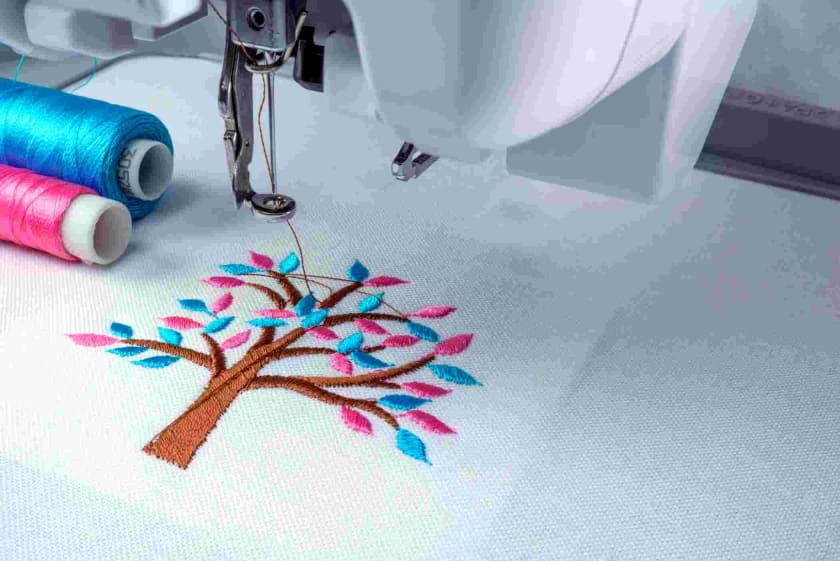Embroidery : History and Significance of the Rich-Art of Design



Embroidered fabrics are often meant to be eye-catching. The meticulous needlework combined with an ingenious conceptualization of designs and themes makes the embroidered fabric highly sumptuous. It takes special sets of skill to do embroidery and it takes a long time, some even years, to produce an elaborate embroidered fabric. Some embroideries may be simple and subtle, prized for its simplicity and elegance. The application of embroidered fabric can range from simple clothing to grand ones, from dressmaking to upholstery. The ultimate objective is to beautify.
What is Embroidery?
Embroidery is the craft of decorating fabric or other materials using a needle to apply thread or yarn. The process may also include pearls, beads, quills, and sequins. It is very traditional needlework, passed down through generations and ultimately picked up by fashion artists as a mainstream method of decorative art on garments. The most common technique for embroidery is the cross-stitch. Other techniques include chain-stitch, satin-whole-stitch, and button-whole-stitch.
The Rich History of Embroidery
The word embroidery comes from the French word broderie, meaning embellishment. Early embroidery can actually be traced back to Cro-Magnon days or 30,000 B.C. Archeological finds from this time period reveal fossilized remains of heavily hand-stitched and decorated clothing. Needles with eyes and beads made from stone were used by prehistoric people in 38,000 B.C.E. The oldest surviving pieces of embroidered material date from approximately 2,000 B.C.E. and were found in Egyptian tombs. Works in China have been dated to the 5th–3rd century BC and in Sweden roughly around 300–700 AD. Ancient Greek mythology has acknowledged the goddess Athena with passing down the art of embroidery along with weaving. Embroidery was an important art in the Medieval Islamic world. In cities such as Damascus, Cairo, and Istanbul, the embroidery was visible on handkerchiefs, uniforms, flags, calligraphy, shoes, robes, tunics, horse trappings, slippers, sheaths, pouches, covers, and even on leather belts. In the 18th century England and its colonies, embroidery was a skill that marked the passage of a young girl into womanhood as well as conveying rank and social standing.
The Significance of Embroidery

Embroidery has a widely significant cultural relevance. In many cultures, embroidery is regarded as a medium of expression. Often the elder women would pass down some special family design to their daughters by way of perpetuating a specific tradition. Embroidery is a storehouse of art and the emotions and history associated with it. Needlework which used to be the sole weapon of women in old times, they would ravish the fabrics with their boastful artwork and fill up their leisure time. Women of aristocratic and noble backgrounds would employ tutors to learn the rich art of embroidery.

Embroidery as of Today
Today embroidered fabric has evolved by leaps and bounds. Now we have machine embroidery as opposed to the painstakingly laborious handmade embroidery. Computerized designs often found their way into the woven fabrics through machines. While it has been saving precious time, it lacks the touch of the authenticity of hand embroidery. The latter is always prized for its originality and aesthetic touch.
The Applications of Embroidery
Clothes, shawls, blankets, and handkerchiefs have been embroidered for ages. Several upholstery fabrics are decorated with embroidery. Machine embroidery is used to create logos and monograms for materials or clothing, as well as to decorate linens, draperies, and other fabrics.
Some Common Methods of Embroidery
- Counted Thread Embroidery
- Whitework Embroidery
- Patchwork Embroidery
- Shadow Work Embroidery
- Fish Scale Embroidery
Embroidery can be always done by hand or machine. Each design is a reflection of the uniqueness of the artist that appeals to the wearer. The embroidered fabric never fails to mesmerize its audience due to its equivalent status to a painting or an artwork. It is because of its aesthetic appeal that embroidery withstood the test of time and remains one of the most cherished works of fashion.



















